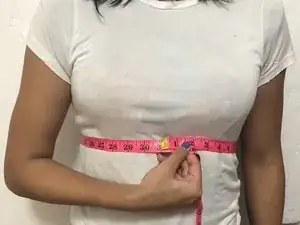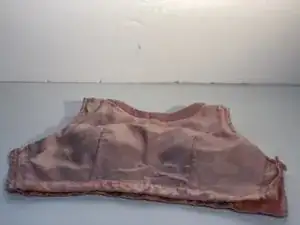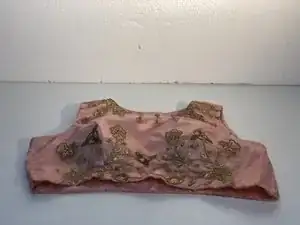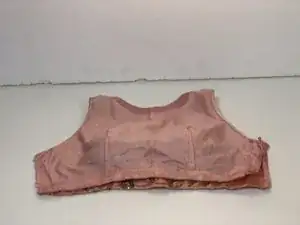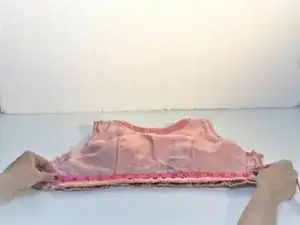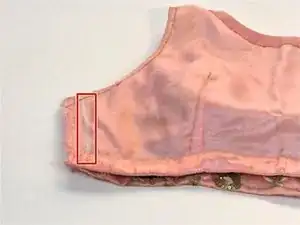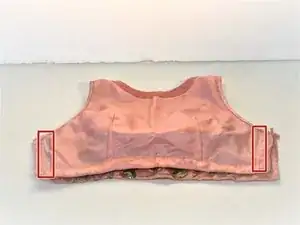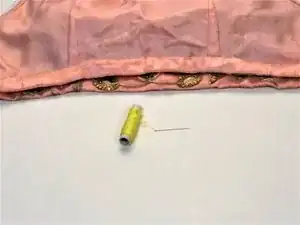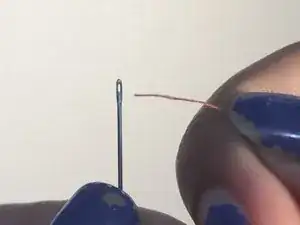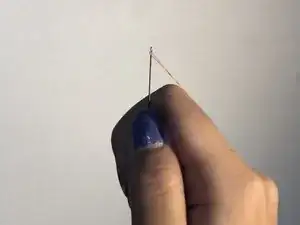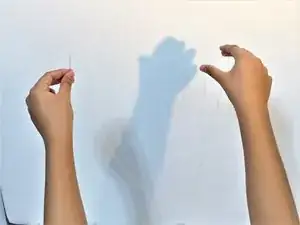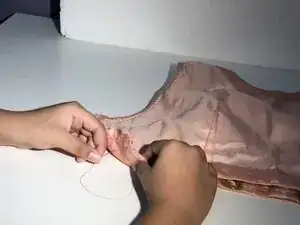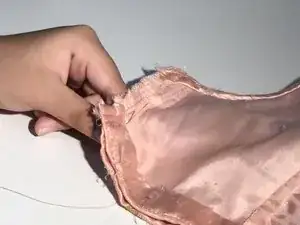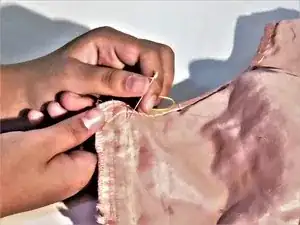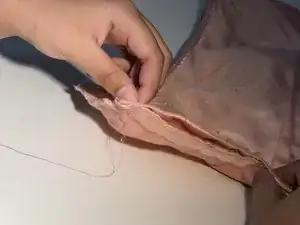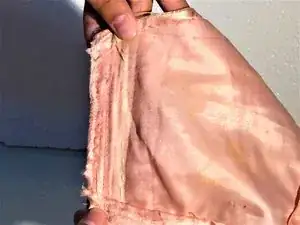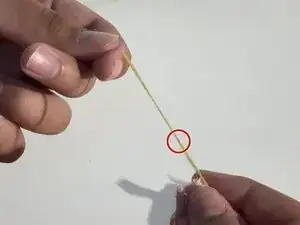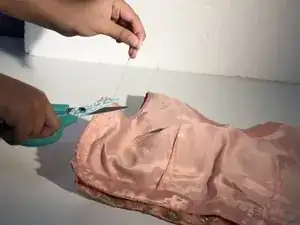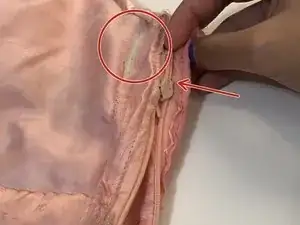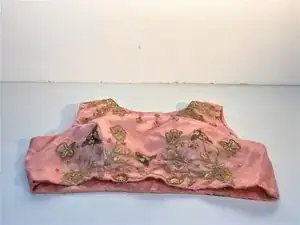Introduction
You may have just bought a new Lengha, or other traditional outfits with a blouse that is not properly stitched yet and is loose. Instead of struggling to find a tailor that can tighten your Lengha blouse, save time and money by following along this guide to do it yourself at home!
This guide shows you step by step how to take in the blouse of a Lengha or any other traditional Indian outfits that come with similar blouses.
Special skills: A running stitch is required to take in the blouse, but this guide teaches you how to preform that task.
Warning: make sure to handle the needle with care, as it can easily be lost resulting in someone getting injured. It is suggested that you wear a guard on your fingers so you can protect yourself from being poked by the needle.
Tools
-
-
Take the measuring tape and wrap it around under your bust. Take note of this measurement.
-
Divide the measurement by two and take note. This will be the measurement used to tighten the blouse in step 4.
-
-
-
Stretch the measuring tape across the bottom of the blouse and use the measurement from step one to evenly measure how much to take it in on both sides.
-
-
-
Take the thread and insert it into the needles hole and pull approximately 30cm of the thread through.
-
-
-
Put the two sides of the thread together to make a single thicker thread.
-
Tie the end and cut the remaining thread, leaving you with a long line of thread for stitching.
-
-
-
Position the needle pointing upward at the bottom of the blouse, where it is marked with chalk to begin stitching.
-
-
-
Push needle upward through both pieces of the cloth.
-
Pull through the entire thread until the knotted end of the thread stops the thread from being pulled any further.
-
-
-
Continue steps 9-11 until you reach the top of the cloth. This will create a running stitch.
-
-
-
Repeat Steps 9-14 for the other side of the blouse.
-
In this image, the zipper only opens until the visible point, therefore stitch above that area.
-
Try the top on and check the fitting. If it seems too tight or loose, then you may have taken the wrong measurements. You may need to cut the stitches and try again. The fitting should ideally not be skin tight but rather allow a bit of room to breath since it is commonly a non-stretch material. Once you are done, you have now altered the blouse to your size and it is ready to be worn.
